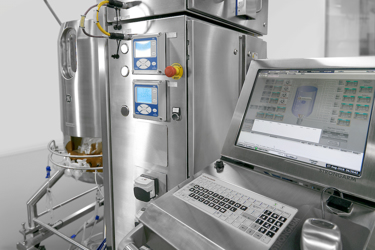Using In-Line Sensors For Real-Time Control

Within biopharmaceutical production there is a shift from manually monitoring processes to real-time control and automated intervention. The goal is to develop algorithms and AI solutions which are able predict outcomes and create autonomous systems. The first step towards this goal is to use reliable and robust in-line sensors for real-time process control. This paper exemplifies how to use available and reliable sensors for in-process control of several different upstream and downstream process parameters.
Monitoring cell culture in a connected mAb manufacturing process
Manual off-line analysis of bioreactor samples is disadvantageous because it does not show trends or warnings when parameters are outside their acceptable ranges. In addition, it takes time and resources to analyze the results. In contrast, in-line sensors provide a continuous stream of data which offers better trend control through the ability to react to deviations in parameters before they are outside of their acceptable ranges. Another benefit of using in-line sensors is that it reduces the number of off-line analyses needed for monitoring and the number of samples sent to analytical support. Figure 1 shows an overview of a closed and connected bioprocess, along with the sensors for process control and Critical for Quality Attributes (CQA). This application note will provide one downstream and two upstream examples of using in-line sensors providing real-time data to control processes.
Get unlimited access to:
Enter your credentials below to log in. Not yet a member of Bioprocess Online? Subscribe today.
